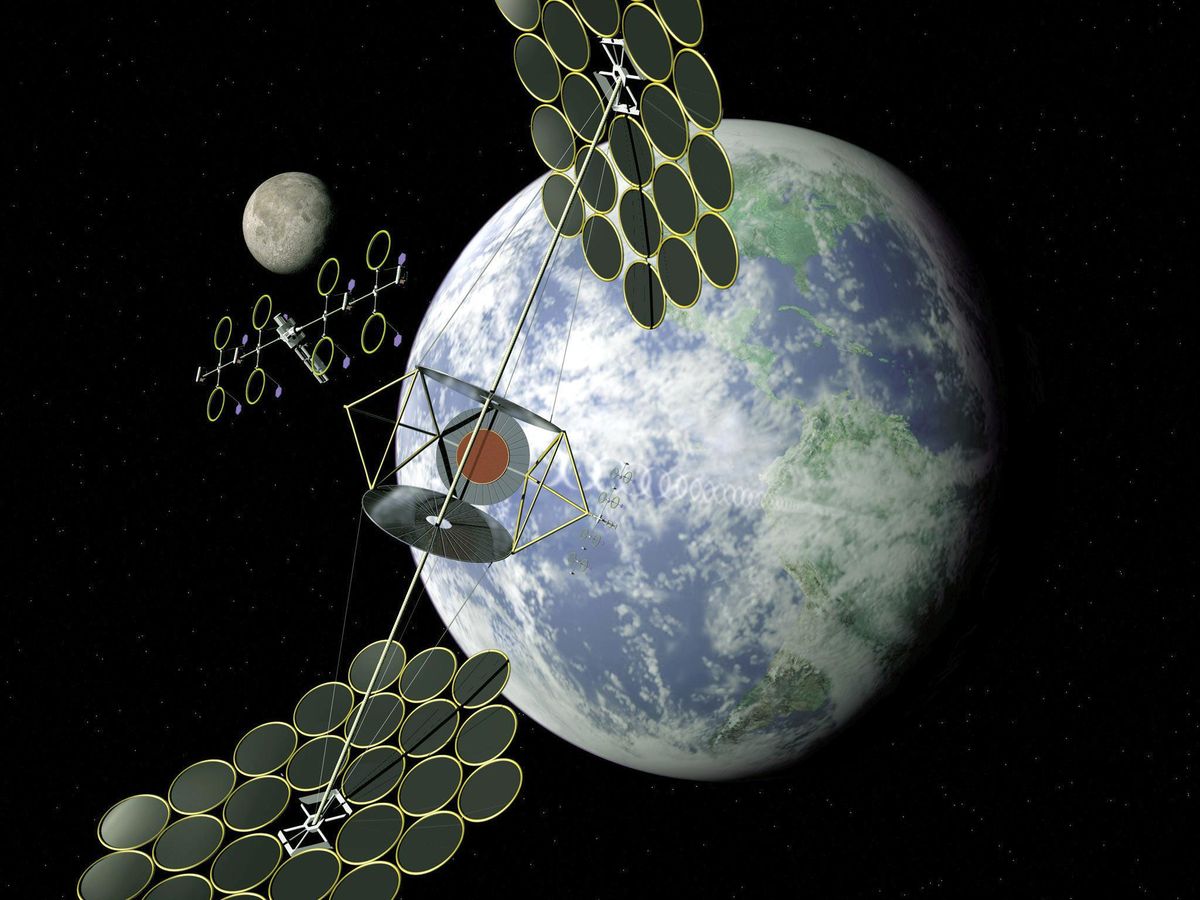In 1941 Isaac Asimov, the science fiction writer, published a short story called "Reason." It was a cautionary tale about robotics and artificial intelligence, but it's also remembered now for its fanciful setting: A space station that gathered solar energy to send to the planets via microwave. Ever since, space-based solar power has been an out-there idea—something with potential to change the world, if we can ever master the technology, and muster the funds, to do it.
Donald Bren has done his share of reading about solar power, and since he is one of America's wealthiest real estate developers, he's in a position to help muster the funds. The California Institute of Technology has just announced that, since 2013, Bren and his wife Brigitte have given the school more than US $100 million to help make photovoltaic power from orbit a reality.
That's a lot of money, and, importantly, the work has been spread out over a decade. A team at Caltech is aiming for the first launch of a test array in late 2022 or 2023.
"This is something that's pretty daring," says Ali Hajimiri, a professor of electrical engineering and a co-director of Caltech's Space Solar Power Project. The long timeline, he says, "allows you take chances, and take risks. Sometimes they pay off and sometimes they don't, but when you do that, in an educated, controlled fashion, you end up with things that you never expected."
Bren, 89, made most of his fortune—estimated between $15.3 billion and $16.1 billion—building offices and homes in Orange County, California. He is majority owner of New York City's iconic MetLife Building. He's also donated land and money for environmental conservation. He gives few interviews (he declined to speak for this story), and while Caltech's Space Solar Power Project has been public, Bren's support of it was a secret until now.
High Earth orbit is a great place for a solar farm—the sun never sets and clouds never form. But to generate a meaningful amount of electricity, most past designs were unrealistically, and unaffordably, massive. Engineers depicted giant truss structures, usually measured in kilometers or miles, to which photovoltaic panels or mirrors were attached, absorbing or concentrating sunlight to convert to direct current, then transmit it to the ground via laser or microwave beams. Hundreds of rocket launches might be needed to build a single installation. It was technology too big to succeed.
"What was really required to make this compelling was to have a paradigm shift in the technology," says Harry Atwater, the Howard Hughes Professor of Applied Physics and Materials Science at Caltech and a leader of the project. "Instead of weighing a kilogram per square meter, we're talking about systems we can make today in the range of 100 to 200 grams per square meter, and we have a roadmap for getting down to the range of 10 to 20 grams per square meter."
How? Through no single step, but perhaps the biggest change in thinking has been to make solar arrays that are modular. Lightweight gallium-arsenide photovoltaic cells would be attached to "tiles"—the fundamental unit of the Caltech design, each of which might be as small as 100 square centimeters, the size of a dessert plate.
Each tile—and this is key—would be its own miniature solar station, complete with photovoltaics, tiny electronic components, and a microwave transmitter. Tiles would be linked together to form larger "modules" of, say, 60 square meters, and thousands of modules would form a hexagonal power station, perhaps 3 km long on a side. But the modules would not even be physically connected. No heavy support beams, no bundled cables, much less mass.
"You can think of this as like a school of fish," says Atwater. "It's a bunch of identical independent elements flying in formation."
Transmission to receivers on the ground would be by phased array—microwave signals from the tiles synchronized so that they can be aimed with no moving parts. Atwater says it would be inherently safe: microwave energy is not ionizing radiation, and the energy density would be "equal to the power density in sunlight."
Space solar power is probably still years away. Analysts at the Aerospace Corporation's Center for Space Policy and Strategy caution that it "will not be a quick, easy, or comprehensive solution." But there is ferment around the world. JAXA, Japan's space agency, is hard at work, as is China's. Launch costs are coming down and new spacecraft are going up, from internet satellites to NASA's moon-to-Mars effort. The Aerospace Corp. analysts say terrestrial power grids may not be the first users of solar power satellites. Instead, they say, think of…other space vehicles, for which a microwave beam from an orbiting solar farm may be more practical than having their own solar panels.
"Is there a need for a lot of additional work? Yes," says Hajimiri. But "some of the ingredients that were major showstoppers before, we are moving in the direction of addressing them."
All of this has the Caltech engineers excited. "It's important for us to be willing to take chances," Hajimiri continues, "and move forward with challenging problems that, if successful, would work toward the betterment of our lives."
- High-Efficiency Solar Cells Power Satellites—Can They Come ... ›
- How Japan Plans to Build an Orbital Solar Farm - IEEE Spectrum ›
- Practical Power Beaming Gets Real - IEEE Spectrum ›
- Solar Power from Space: First Launch on a SpaceX Falcon 9 - IEEE Spectrum ›
Ned Potter is a New York writer who spent more than 25 years as an ABC News and CBS News correspondent covering science, technology, space, and the environment.



